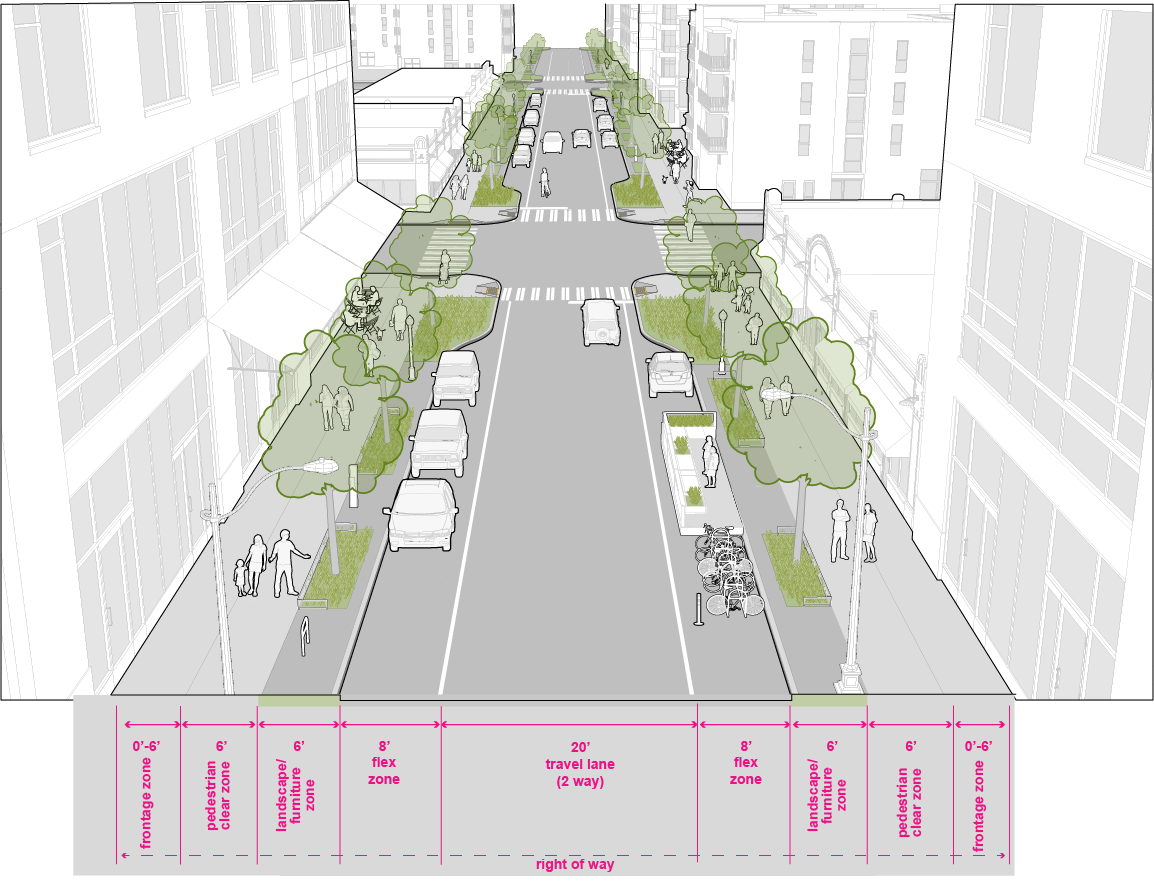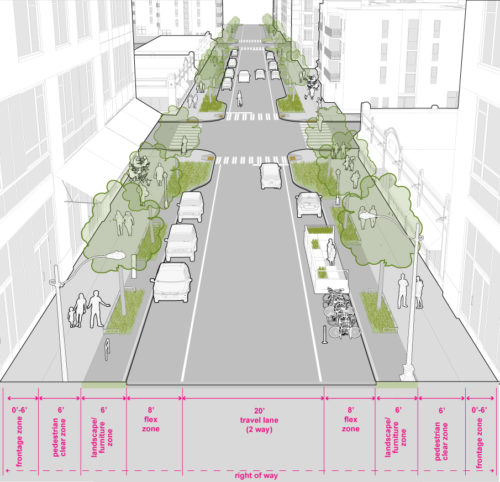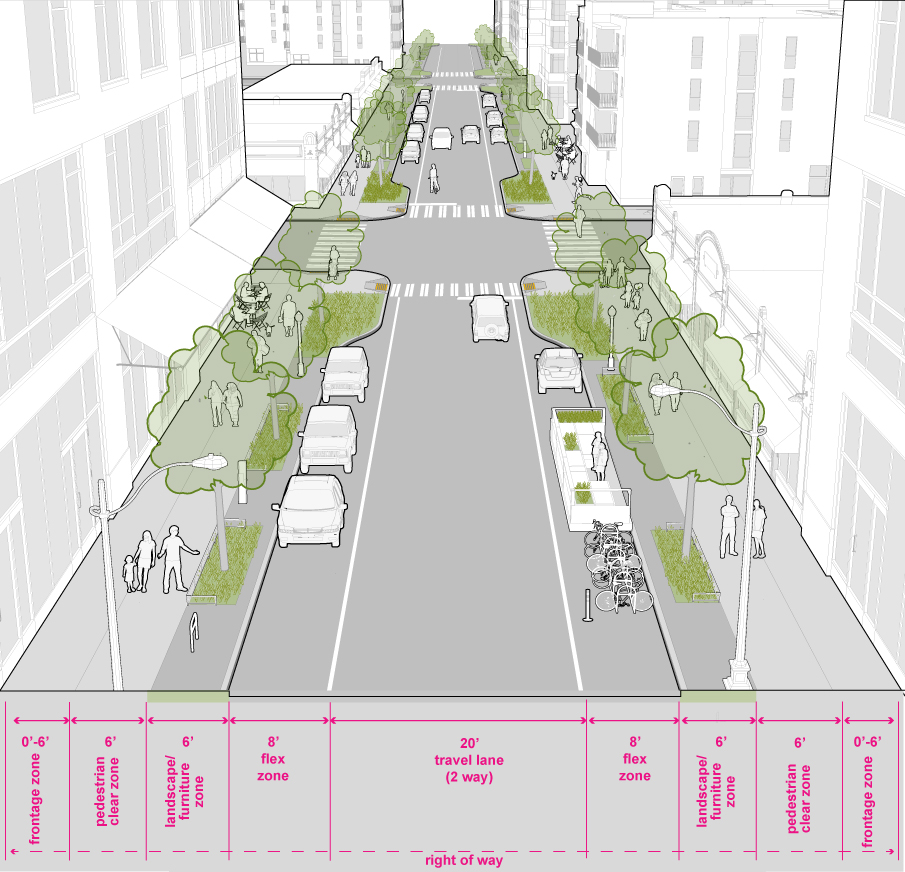2.7 Downtown Neighborhood Access
Downtown Neighborhood Access Streets serve lower intensity land uses in the Downtown Urban Center and are much smaller in scale than Downtown Streets. These street types are appropriate considerations for green streets, urban curbless streets and pedestrianized streets.

3.7 Street Trees
Street trees, generous landscaping and other elements contribute to a more intimate, neighborhood-oriented streetscape. Read More »
3.6 Street and Pedestrian Lighting
Street and pedestrian lighting can improve, facilitate, and encourage vehicular and pedestrian traffic. Read More »
Bike Parking
On-street (short-term) bike parking may be provided in the form of corrals or clusters of inverted U racks. The SDOT bicycle rack program website provides information on requesting a bike corral. Read More »
Parklets
Public space, landscaping, street furniture, parklets, and street cafes contribute to an intimate, neighborhood-oriented streetscape. Read More »
3.16 Downtown Design
Downtown design standards help to create a cohesive and clear streetscape and include sidewalk pavement treatments, plantings, trees, and pedestrian-scale lighting. Read More »
There are few of these street types in the Downtown Urban Center and they are primarily located in downtown districts such as Belltown and Pioneer Square. Some of Downtown Neighborhood Access streets are designated Green Streets and support high levels of walking, bicycling as well as frequent parking turnover, including loading zones. Downtown Neighborhood Access streets accommodate public spaces, generous landscaping and other elements that contribute to a more intimate, neighborhood-oriented streetscape. Transit may also be present. Sidewalk width is dictated by the Seattle Land Use Code on many downtown streets. See Map 1 C in SMC 23.49 for specific sidewalk width requirements.
|
Typical Street Classification(s) |
|
|
Public Space Programming |
Street furniture, Sidewalk cafes, Parklets, Streateries, Performance space, Vending, Pedestrian Lighting (see Downtown Design Standards), Festival Streets, Bike Parking, Public Art. |
|
Greening |
Street trees, permeable pavement for sidewalks, landscaping, rain gardens, sloped or walled bioretention cells (pursuant to vertical wall policy). See Downtown Design Standards for landscaping standards. |
|
Pedestrian |
Medium-high volumes of pedestrians, particularly on transit blocks, requiring 6-8’ of pedestrian clear space that must not be encroached upon by objects such as street furniture, poles, A-frame signs, and sidewalk cafes. Minimize curb cuts and driveways to maximize pedestrian safety by reducing conflict points (See Seattle Land Use Code Section F for more information on curb cuts and driveways). |
|
Bicycle |
Non-arterials streets typically do not require protected bike facilities; shared streets and greenways are appropriate on Downtown Neighborhood Access streets to serve bicycle circulation. |
|
Freight |
Downtown Traffic Control Zone – freight restrictions in place for many downtown streets |
|
Transit |
Transit service not prevalent on Downtown Neighborhood Access streets. |
|
Curb Lane/Flex Zone |
Alleys shall serve as the primary loading and parking access needs. Curb space serve frequent parking turnover; dedicated loading zones are desirable. |
| Travelway width |
Travelway widths for two travel lanes shall be a minimum of 18′ and a maximum of 20′. If there is surplus right of way beyond the required right of way, the flex lane could be used for the following uses: Greening, public space programming, parking, or widened sidewalks where land use warrants them. |
*Color for illustration is used to differentiate between right-of-way elements and does not represent standard color for design.


